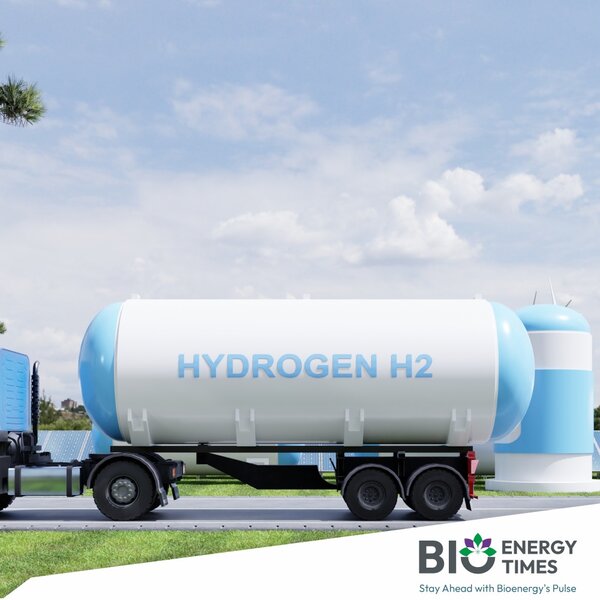Hydrogen, the simplest and most abundant element in the universe, is poised to play a transformative role in the global energy landscape. But not all hydrogen is created equal. The National Green Hydrogen Mission in India aims to unlock the full potential of clean, sustainable green hydrogen as a key driver for a low-carbon future.
Why Green Hydrogen?
The current energy system relies heavily on fossil fuels, leading to significant greenhouse gas emissions and climate change concerns. Green hydrogen offers a compelling alternative:
- Clean Burning: Produced using renewable energy sources like solar or wind power, green hydrogen emits no greenhouse gases at the point of use, contributing to a cleaner atmosphere.
- Versatile Fuel: Green hydrogen has the potential to be used in various sectors, including transportation, power generation, and industrial processes, offering a pathway to decarbonize these sectors.
- Energy Storage: Green hydrogen can be stored and transported, acting as a vital energy carrier, especially for intermittent renewable energy sources like solar and wind.
The National Green Hydrogen Mission: A Multi-Pronged Approach
India’s National Green Hydrogen Mission is a comprehensive strategy to establish the country as a leader in green hydrogen production and utilization. Here’s a closer look at its key components:
Objectives and Significance:
The mission has a clear vision:
- Decarbonization: By promoting green hydrogen, India aims to reduce its carbon footprint significantly, aligning with global climate change mitigation efforts.
- Energy Security: Shifting dependence from imported fossil fuels to domestically produced green hydrogen enhances India’s energy security and reduces vulnerability to price fluctuations.
- Economic Growth: The mission is expected to spur economic growth by creating new jobs in manufacturing, research, and infrastructure development. It fosters innovation and positions India as a leader in the green hydrogen sector.
Key Components and Strategies:
The mission employs a multi-faceted approach to achieve its goals:
- Demand Creation: The mission encourages specific industries, such as steel production and transportation, to switch to green hydrogen, creating a market for this clean fuel.
- Competitive Tendering: To ensure cost-effectiveness and foster competition, green hydrogen and its derivatives (like green ammonia and methanol) will be procured through a competitive bidding process.
- Certification Framework: Maintaining the environmental benefits of green hydrogen is crucial. A robust certification framework will ensure that green hydrogen is produced solely using renewable energy sources.
Strategic Interventions for Green Hydrogen Transition (SIGHT): - Incentives: Financial support in the form of subsidies and tax breaks will be offered to encourage investments in electrolyzer manufacturing (equipment used for green hydrogen production) and green hydrogen production itself.
- Adaptable Approach: The mission recognizes that technological advancements and market dynamics will evolve. It will adapt its programs and schemes to reflect these changes and ensure long-term success.
Pilot Projects:
The mission recognizes the importance of practical demonstrations through pilot projects in critical areas: - Low Carbon Steel: Developing methods to produce steel with a significantly reduced carbon footprint by using green hydrogen instead of traditional fossil fuel-based processes.
- Mobility: Exploring the feasibility of using green hydrogen in various transportation sectors, including fuel cell electric vehicles, buses, and even trains.
- Shipping: Investigating the potential of green hydrogen as a fuel source for powering ships, a significant contributor to global emissions.
- Other Areas: Projects are planned to explore the use of green hydrogen in decentralized energy applications, biomass-based hydrogen production (using organic matter), and developing efficient hydrogen storage technologies.
Green Hydrogen Hubs:
To facilitate large-scale production and utilization, the mission focuses on establishing green hydrogen hubs: - Identification: Recognizing regions with ideal conditions for large-scale green hydrogen production, such as abundant renewable energy resources and access to infrastructure, will be prioritized.
- Infrastructure Development: The mission will support building the necessary infrastructure for green hydrogen production, storage, and transportation within these hubs.
- Initial Phase: The ambitious aim is to establish at least two green hydrogen hubs by 2025-26, with an initial investment of 400 million euros. These hubs will serve as a launchpad for wider adoption.
Enabling Policy Framework:
Creating a supportive policy framework is essential for fostering the green hydrogen ecosystem: - Renewable Energy Provision: Policies will be implemented to facilitate access to clean and affordable renewable energy, the backbone of green hydrogen production.
- Waiver of Fees: To reduce production costs, the mission proposes waiving interstate transmission fees for renewable energy used specifically for green hydrogen production.
- Open Access and Connectivity: Ensuring seamless access to renewable energy sources for green hydrogen production facilities through robust grid infrastructure.
The National Green Hydrogen Mission: A Vision for a Cleaner Future (Continued)
Mission Outcomes by 2030:
The National Green Hydrogen Mission has set ambitious yet achievable targets for 2030:
- Green Hydrogen Production: A significant increase in green hydrogen production capacity, aiming to reach at least 5 million metric tons (MMT) annually. This would position India as a major global producer.
- Renewable Energy Expansion: To support green hydrogen production, the mission envisions the addition of approximately 125 GW of renewable energy capacity. This substantial expansion will strengthen India’s commitment to clean energy.
- Investment and Job Creation: The mission is expected to attract significant investments exceeding ₹8 lakh crore (approximately $99 billion USD). This surge in investment will create over 6 lakh (600,000) new jobs across various sectors, boosting the economy.
- Reduced Fossil Fuel Imports: Transitioning to green hydrogen can significantly reduce India’s dependence on imported fossil fuels. The mission estimates a potential reduction in fossil fuel imports exceeding ₹1 lakh crore (approximately $12.4 billion USD) annually.
- Emission Reduction: By promoting green hydrogen, the mission aims to avoid nearly 50 MMT of annual greenhouse gas emissions. This substantial reduction will contribute significantly to India’s climate change mitigation goals.
Types of Hydrogen: Understanding the Difference
It’s crucial to differentiate between various types of hydrogen production methods:
- Grey Hydrogen: The most common method, but also the most polluting. Grey hydrogen is produced from fossil fuels like coal or natural gas through a process called steam reforming, releasing significant carbon dioxide emissions.
- Blue Hydrogen: A cleaner alternative to grey hydrogen. Blue hydrogen is also produced from fossil fuels, but the associated carbon emissions are captured and stored underground using carbon capture and storage (CCS) technology. However, CCS technology is still under development and has limitations.
- Green Hydrogen: The hero of this story. Green hydrogen is produced through electrolysis, a process that splits water molecules using electricity from renewable sources like solar or wind power. This method creates zero emissions at the point of production, making it a truly sustainable option.
Challenges and Opportunities: Embracing the Future
The National Green Hydrogen Mission acknowledges the challenges that lie ahead:
- Cost Reduction: Currently, green hydrogen is more expensive to produce compared to traditional methods due to factors like the high cost of electricity and electrolyzers. Technological advancements and economies of scale are expected to bring down the cost in the future.
- Scaling Up Production: Achieving large-scale production of green hydrogen necessitates significant investments in infrastructure development, including renewable energy plants, electrolyzers, and storage facilities.
- Efficient Storage and Transportation: Developing efficient and cost-effective methods for storing and transporting green hydrogen is crucial for widespread adoption. Research in this area is ongoing.
- Integration with Existing Systems: Integrating green hydrogen into existing energy infrastructure and industrial processes requires careful planning and adaptation.
However, the mission also recognizes the exciting opportunities that green hydrogen presents: - Job Creation: As mentioned earlier, the mission has the potential to create a significant number of new jobs in diverse sectors like manufacturing, research, and infrastructure development.
- Export Potential: India can emerge as a major exporter of green hydrogen and its derivatives like green ammonia and methanol, boosting the economy and establishing itself as a leader in the clean energy transition.
- Technological Leadership: By investing in research and development, India can become a global leader in green hydrogen technology, fostering innovation and attracting investments.
- Reduced Reliance on Fossil Fuels: Transitioning to green hydrogen can significantly lessen India’s dependence on imported fossil fuels, enhancing energy security and reducing air pollution.
Global Context: Collaboration for a Sustainable Future
India is not alone in its pursuit of green hydrogen. Countries like Germany, Japan, and Australia are also making substantial investments in this clean energy source. International collaboration on research, development, and deployment can accelerate advancements in green hydrogen technologies and facilitate knowledge sharing.
The Role of Industry and Research Institutes: A United Front
The success of the National Green Hydrogen Mission hinges on active participation and collaboration between various stakeholders:
- Industry: The active involvement of industries across diverse sectors like energy, steel, transportation, and chemicals is crucial. Industries can invest in green hydrogen production facilities, develop applications for green hydrogen, and contribute valuable expertise.
- Research Institutes: Research institutions play a vital role in developing innovative and cost-effective green hydrogen production technologies, storage solutions, and integration methods. Collaboration between industry and research will be key to overcoming technical challenges.
Political and Regulatory Support: Paving the Way
Strong political and regulatory support is essential for fostering a thriving green hydrogen ecosystem:
- Financial Incentives: Providing financial aid through subsidies, tax breaks, and loan guarantees can encourage investments in green hydrogen production, infrastructure development, and research activities.
- Clear Roadmaps and Frameworks: Establishing clear roadmaps and regulatory frameworks will provide direction and stability for businesses involved in the green hydrogen sector. This includes defining standards for green hydrogen production and outlining a pathway for grid integration.
- International Cooperation and Knowledge Exchange: Collaborating with other countries on research, development, and knowledge sharing can accelerate advancements in green hydrogen technologies. This fosters innovation and avoids duplication of efforts.
Final Thoughts: An Even Better, Greener Future
The National Green Hydrogen Mission is a symbol of India’s steadfast dedication to a low-carbon, sustainable future. If the mission’s lofty objectives are met, it could potentially:
- Decarbonize the Indian economy and make a major contribution to international efforts to mitigate climate change.
- Lessen India’s reliance on imported fossil fuels to increase energy security.
- Promote innovation in the green hydrogen industry and create new jobs to boost economic growth.
- Establish India as a leader in the production of green hydrogen and clean energy technologies worldwide.
This mission depends on the government, business community, academic institutions, and the general public working together. India can use green hydrogen to its advantage and open the door to a cleaner, greener future for all by banding together. - Disclaimer: The views and opinions expressed in the article by Dilip Patil, Managing Director of Samarth SSK Ltd., are solely his own.














